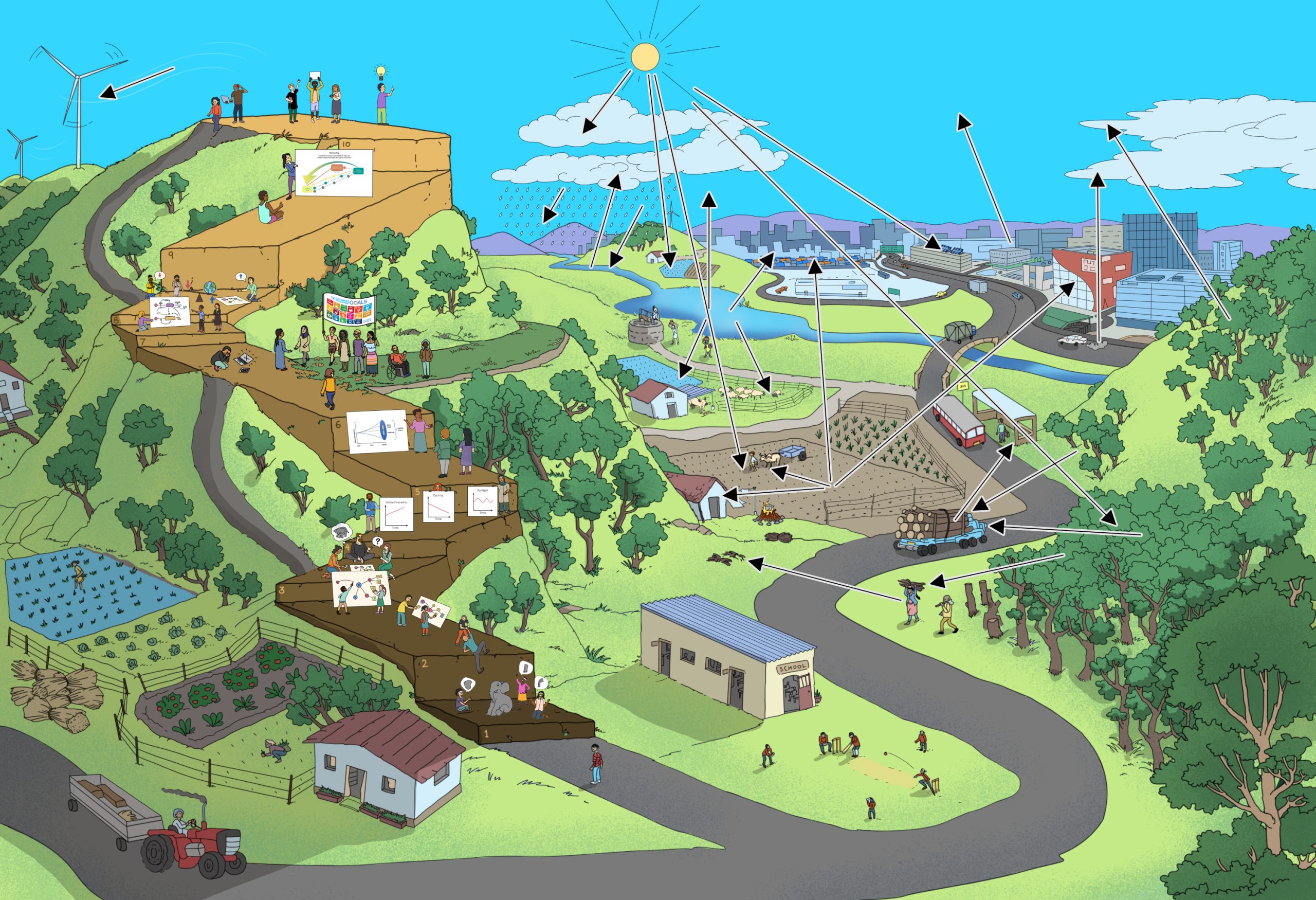What is a model?
For Step 2 and 3
A model is a simplified picture or depiction of a part of reality. The aim of preparing a (scientific) model is to clarify and organize one’s own thinking and make it shareable with others.
To generate a model, identify relevant components or elements and (inter)linkages of a chosen part or situation of reality (i.e., your topic), that conveys or expresses what you perceive about the topic at that moment.
You might use different kinds of models such as graphical models to visualize the topic, or conceptual models to strengthen understanding about the topic.
For example:
- Globe – a 3D model
A globe is a model of the much more complex real world. But the globe allows us to understand the position of the continents and oceans, gives us an idea of the arrangement of mountain ranges, rivers, or states etc. The globe helps us get some understanding of the earth, which, in reality, is a very complex system!
- Water Cycle – a graphical model
The global water cycle is a well-known model. It visualizes the transpiration of water over the oceans and the condensation of water vapour in the form of clouds. These clouds cause precipitation over the oceans and, driven by winds, also over land. Precipitation feeds ground water, as well as surface waters like creeks and rivers, which finally end up in the oceans again.
- An equation – a conceptual model
Pythagoras theorem a2 + b2 = c2
How to make a model?
Models can be simple or complex. To design models as successfully as possible, we should follow Albert Einstein´s advice:
“Everything should be made as simple as possible, but not simpler.”
Visualizing is one of the ways to help create a model. It allows one to structure knowledge of complex topics. It uses words, arrows, logos, or pictograms as symbols of interrelated components of the given topic.
Steps to design a model:
- Describe the intended purpose of the model
- Collect necessary information
- Evaluate which pieces of information are in a causal relation to others, and therefore necessary to understand the chosen topic. You might have to convert specific information into abstract terms or icons.
- To create the model,
- Give it a heading
- Arrange the elements in a logical order of time, levels, or spatial or geographic positions, as appropriate for the chosen topic
- Use icons where suitable and prepare an explanatory legend.

